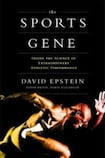
K Anders Ericsson can probably forgive Malcolm Gladwell for making him one of the world’s most famous psychologists, even if he thinks Gladwell “misconstrued” the study he’s best-known for.
In 1993, Ericsson studied violinists at the Music Academy of West Berlin, and concluded that the difference between the best musicians and the merely very good ones was that the best ones practised more. Specifically, he reported that the top musicians had logged an average of 10,000 hours of deliberate practice by the age of 20.
People had believed that outstanding musical ability was rooted in innate talent. Ericsson’s findings suggested that “talent” was really a function of dedication. The powerful implications of that insight were explored in Gladwell’s 2008 bestseller, Outliers.
Ericsson may not have endorsed Gladwell’s proclamation that 10,000 hours of practice was “the magic number of greatness”. Nevertheless, “the 10,000-hour rule” quickly entered the cultural mainstream.
It’s not hard to see why. The “rule” says that we are the masters of our own destiny. We can become whatever we will ourselves to be. The idea is seductive. As David Epstein shows in The Sports Gene, his enquiry into the roots of sporting greatness, it’s also wrong.
Epstein, a Sports Illustrated writer and former college track athlete, isn’t arguing that practice doesn’t matter. As one physiologist tells him: “There isn’t a single geneticist ... who says that hard work isn’t important. Nobody thinks Olympians are jumping off the couch.”
But not everyone’s practice is equally effective. In Ericsson’s study, some musicians attained elite level much faster than others. “[The study] only reports the average number of hours of practice,” Epstein writes. “It does not report the range of hours required for the attainment of expertise ...”
Epstein describes Campitelli and Gobet’s study of chess players, which found that while the average time taken to reach master level was about 11,000 hours, some masters got there in only 3,000 hours, and others couldn’t seem to get there no matter how many hours they put in: “One man’s 3,000-hours rule was another man’s 25,000-and-counting-hours rule.”
He meets Dan McLaughlin, a man in his 30s who’s trying to turn himself into a pro golfer with 10,000 hours of practice. “I think you could probably master something in anywhere from 7,000 to 40,000 hours,” McLaughlin says. “Somehow, the 7,000-to-40,000-hour rule just doesn’t have the same ring to it,” Epstein notes.
Baseball provides an example of how practice and innate ability relate to each other. Epstein describes how several renowned major league sluggers, including Barry Bonds, were struck out by Team USA softball pitcher, Jennie Finch. Team-mates roared with laughter as these giants of the game, accustomed to whacking 95mph fastballs, proved helpless against Finch’s 68mph underarm softball.
It used to be thought that the best baseball hitters were gifted with exceptional reaction speed, but research has shown their reactions are no quicker than the average person’s. In fact, hitters rely on their ability to interpret the movement of the pitcher to anticipate what kind of a ball he is about to throw. They start reacting to the pitch before the ball is even delivered. The expertise required to interpret a pitcher’s movement takes years of practice to acquire. And when they are confronted with a completely unfamiliar pitching style, such as the one deployed by Jennie Finch, their perceptual database is useless: they lose their hitting superpower.
The vignette seems to support the primacy of practice. However, as Epstein explains, although baseball players don’t have extraordinary reactions, they do tend to have extraordinary eyesight.
Having 20-20 vision means that you can see details at a distance of 20 feet that the average eye can see from ... 20 feet. In baseball’s major leagues, 20-13 or 20-12 vision is the norm. They can see at 20 feet what the average eye can only make out at 12 feet.
That means they can perceive details of what a pitcher is doing – down to the orientation of the ball as it leaves his hand – that the average person would never even pick up. No amount of practice can give you 20-12 vision. Someone who begins with that innate gift can make much faster progress than someone who lacks it. So the level to which one can ultimately aspire has been dictated by an innate factor.
Having established that practice alone cannot account for variance in skill performance, Epstein produces a broad survey of the role of genes in sporting performance.
The book’s middle section seeks to explain why athletes of African ancestry are fastest over every distance from the 100 metres to the marathon. These chapters, packed with detail and insight, are sometimes reminiscent of Jared Diamond’s 1997 classic Guns, Germs and Steel, which argued that the differing pace of economic and technological advancement in various societies could largely be explained by the differing environmental conditions in which those societies had developed. Epstein is (mostly) reporting other people’s findings, but his presentation of the material is clear and compelling.
Towards the end he explores some of the profound implications of recent advances in the understanding of genetics. We already have no problem accepting that every physical attribute is governed by combinations of genes. Epstein describes evidence that qualities we think of as attributes of character, such as determination and the appetite for work, also have a genetic component. The will to practice itself may be governed by our biology.
Epstein is too respectful of the complexity of his subject matter to leap to any grand conclusions. The book was conceived partially as a rebuttal to glib theorising, and it is all the more fascinating as a result.









